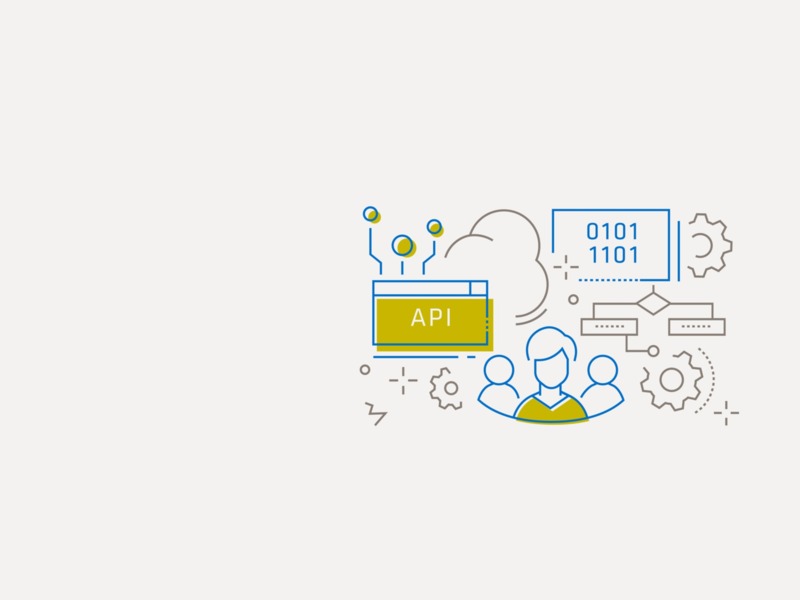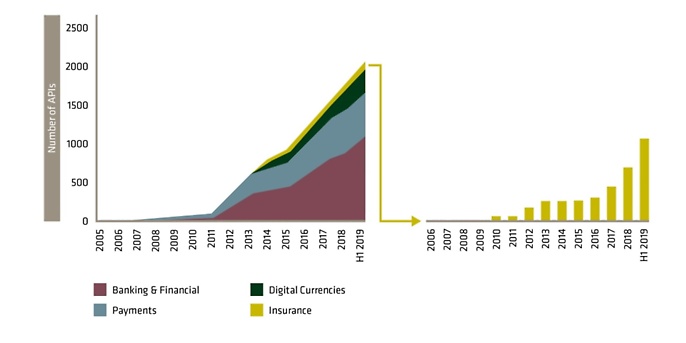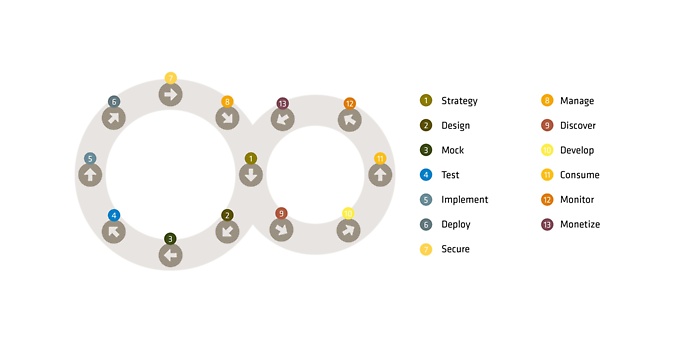When large multinationals like Amazon and Google make their interfaces publicly available for general use, the focus for an insurer is on making sure all communication partners are satisfied and on establishing long-lasting business relationships. This creates a personal relationship to individual business partners, which is not the case with public interfaces offered by a major corporation. When it comes to setting up, maintaining and protecting the interfaces of an insurance company, there are a number of challenges associated with delivering the level of quality necessary to satisfy the needs of each and every business partner. To meet the expectations that different users of an interface have, achieving high standards in terms of performance and resilience takes centre stage. It is critical here to ensure that the systems and data are protected at all times.
The illustration below shows the evolution of interfaces in the banking and insurance sectors over the past years and demonstrates a clear need for insurance companies to utilise a comprehensive API management system.



